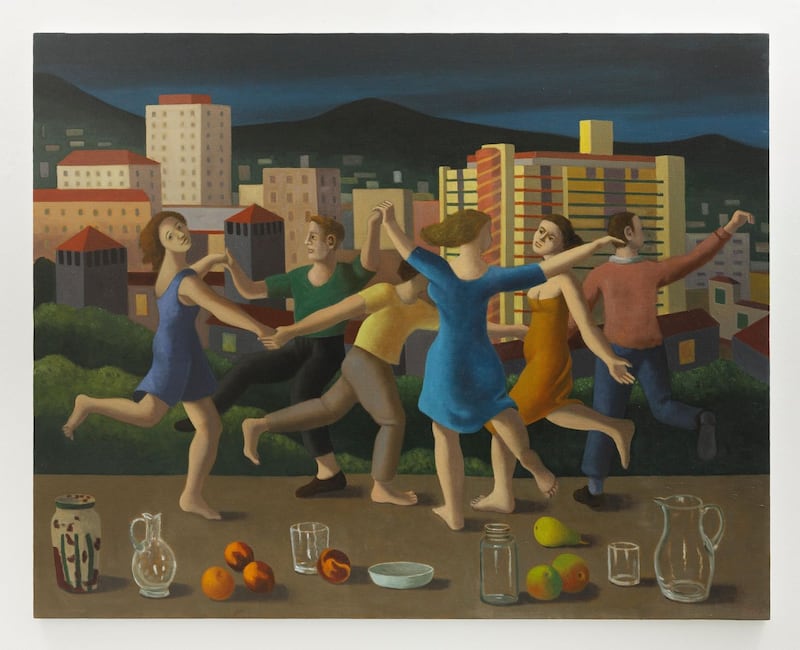What is it? Poussinesque – Euphoria (2012) is a painting by Stephen McKenna. He died earlier this year on March 20th. At the time, he was working towards his current exhibition at the Kerlin Gallery, Dublin, where he showed his work since the gallery first opened in 1988. Sadly, the exhibition became a celebration of his life and work, featuring a selection of paintings produced over the past 10 years or so. There is an elegiac quality to much of the show, including Poussinesque – Euphoria.
This work is a 21st century reworking of Poussin's great painting A Dance to the Music of Time (c.1638), which is in the Wallace Collection in London. A commission from a future pope, Clement IX, Poussin's work alludes to Jupiter's gift of Bacchus, the god of wine, to humanity, to make up for life's hardships. The dancing figures symbolise a cyclical progression through poverty, labour, wealth and indulgence to poverty again. Time, the seasons and transience are also built into the iconography.
McKenna’s dancers – variants of Poussin’s Poverty, Labour, Wealth and Pleasure – are set against an apparently thriving city but a foreground frieze of empty jugs, glasses and a vase without flowers indicate that all is not well, while a darkening sky casts a stormy light over the scene.

Where can I see it? Like many other galleries, the Kerlin is open for Dublin Gallery Weekend (see dublingalleryweekend.ie for details of numerous exhibitions, tours, talks and events) and, as a special tribute to McKenna, is hosting a celebratory event – a finissage – on Sunday, November 26th, 3-5pm.
Is it typical of the artist's work? It is typical, though McKenna explored several overlapping domains of artistic enquiry. After studying at the Slade in London he began as an abstract painter, being averse to pop art and conceptualism, both in the ascendant. But he soon realised that representation was for him. "I never learned to follow fashion," he said of himself. He embraced Italian Carlo Carra's idea that painters could and should apply Renaissance methods to the contemporary world. McKenna spread his net more widely, to encompass the classicism of Claude, Poussin and Morandi, though he was uneasy about being described as a classical painter. Though he settled, very happily, in Bagenalstown by the side of the River Barrow in Co Carlow late in the 1990s, he was an inveterate traveller and a convinced European (he did a series of paintings of European port cities), and was fascinated by the thorny but essential relationship between Europe north and south, Germania and Italia.











